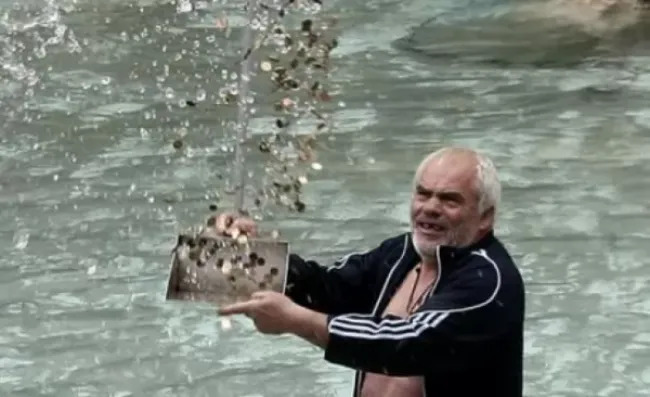Fishing Coins From the Trevi Fountain: The Business Behind Your Wishes
Rome’s Trevi Fountain is a breathtaking Baroque masterpiece that draws millions of visitors, each eager to toss a coin and make a wish. Every year, over €1.5 million in coins are thrown into its waters by hopeful tourists dreaming of a return to the Eternal City. But beneath this romantic ritual lies a pressing question: what really happens to all that money? Who benefits from your wishes, and how much of it truly makes a difference?
The Tradition: A Manufactured Fantasy
The coin-tossing ritual has been immortalized by a 1954 Hollywood film and a Sinatra classic, transforming it into a “must-do” for visitors. But behind the charm is a carefully cultivated illusion. Tourists toss their coins, believing they’re part of something magical. In reality, it’s a brilliantly orchestrated tradition that turns sentimental dreams into cold, hard cash.
The Collection Process: Precision Disguised as Charity
Twice a week, workers from ACEA, the regional utility company, descend on the fountain equipped with brooms and suction hoses to gather the coins. Police officers oversee the process to ensure everything stays above board. Once collected, the money is handed over to Caritas, a Catholic charity that has managed the funds since 2001.
At first glance, it appears to be a charitable operation. But the reality is more complex. This highly efficient system is designed not just to help the needy but also to sustain a lucrative tradition. Beyond coins, the fountain yields surprising finds like jewelry, religious medals, and even dentures. These items are either recycled or donated, adding a bizarre twist to the enterprise.
Turning Coins Into Cash
After collection, the coins are cleaned, dried, and sorted using repurposed cutlery dryers—an oddly fitting metaphor for the practical, no-frills nature of the operation. Foreign currencies are exchanged for euros, and the total haul is significant. In 2023, the fountain produced a record €1.7 million—a fortune drawn from the pockets of tourists who likely have no idea they’re funding a well-oiled financial machine.
Where the Money Goes: Help or Hype?
Caritas uses the funds to support Rome’s most vulnerable populations, financing soup kitchens, homeless shelters, and free supermarkets. In 2023, they served over 52,800 meals and assisted nearly 10,000 families—a commendable effort.
However, the arrangement also lets the city sidestep its responsibilities. By delegating this task to a charity, Rome avoids addressing deeper systemic issues while maintaining a benevolent image. The money becomes a lifeline for some but a convenient excuse for others.
This dynamic became glaringly evident in 2017 when then-mayor Virginia Raggi proposed redirecting the funds to maintain Rome’s crumbling historical landmarks. The backlash was immediate, with critics accusing her of prioritizing monuments over people. Though the proposal was abandoned, it highlighted an uncomfortable truth: this money is not just about charity—it’s a contested resource, fought over by those who see it as a necessity and those who see it as an opportunity.
The Broader Implications: The Price of Tradition
The Trevi Fountain’s coin collection is emblematic of a larger issue—the commercialization of culture. Tourists toss coins, snap photos, and leave feeling they’ve contributed to something meaningful. But how much of that money truly reaches those in need? And how much is lost to bureaucracy, inefficiency, or simply absorbed into the city’s image-driven narrative?
Rome, a city battling poverty, homelessness, and crumbling infrastructure, collects €1.7 million annually from the fountain. While significant, it’s a drop in the bucket compared to what’s needed. Yet, this modest sum is celebrated as a symbol of generosity and hope. Is it really? Or is it just a convenient way to mask deeper societal challenges?
Conclusion: The Illusion of Giving
The next time you toss a coin into the Trevi Fountain, ask yourself: Are you making a wish, or are you fueling a business? The tradition is undeniably charming, but it’s also a stark reminder of how easily we buy into the illusion of altruism.
Your coin might feed a hungry person or shelter a homeless family—or it might vanish into a maze of bureaucracy. Meanwhile, the fountain will continue to sparkle, the coins will keep flowing, and the city will keep profiting from your dreams.
So toss your coin if you wish. Just remember: it’s not magic. It’s a transaction, cleverly packaged as tradition, and sold as wonder. Wake up and smell the espresso—your wish is their paycheck.
